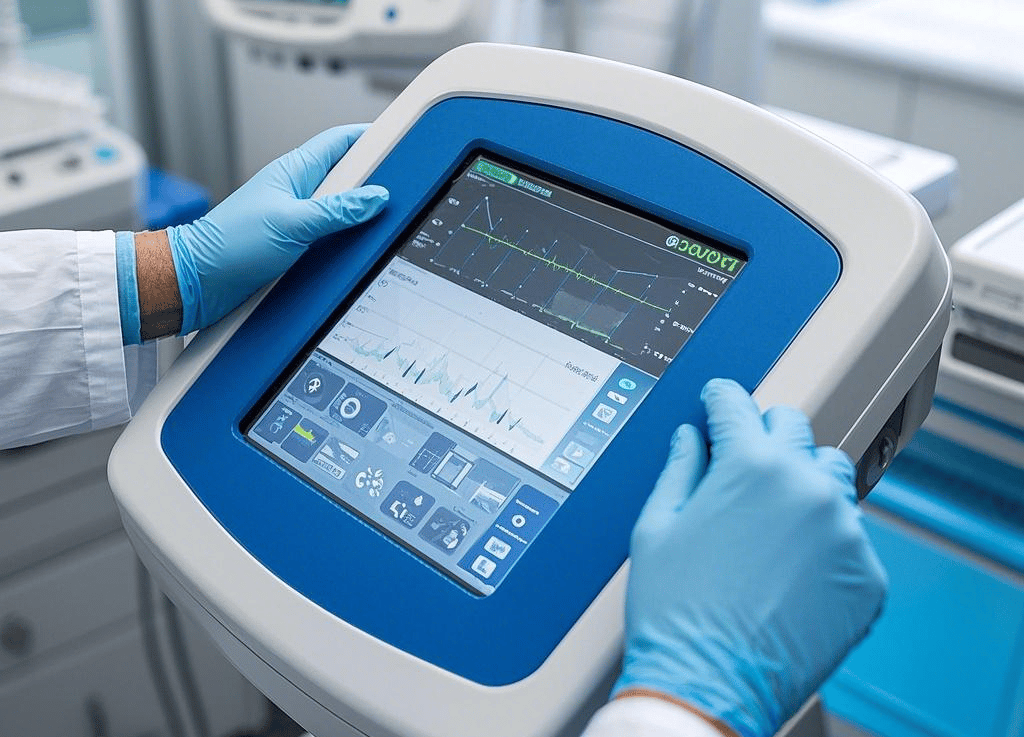How to Integrate Touch Screens into Medical Devices
In the rapidly evolving healthcare industry, touch screens are becoming an integral part of medical devices. From patient monitoring systems to surgical equipment, touch screens enhance usability, efficiency, and patient care. In this article, we’ll explore how to effectively integrate touch screens into medical devices and the key considerations for success.
3/4/20252 min read


How to Integrate Touch Screens into Medical Devices
In the rapidly evolving healthcare industry, touch screens are becoming an integral part of medical devices. From patient monitoring systems to surgical equipment, touch screens enhance usability, efficiency, and patient care. In this article, we’ll explore how to effectively integrate touch screens into medical devices and the key considerations for success.
1. The Growing Role of Touch Screens in Medical Devices
Touch screens are transforming the way healthcare professionals interact with medical equipment. They offer:
Intuitive Interfaces: Simplify complex operations and reduce training time.
Space Efficiency: Replace traditional buttons and knobs with sleek, compact designs.
Enhanced Hygiene: Easy-to-clean surfaces reduce the risk of contamination.
2. Key Considerations for Integration
Regulatory Compliance:
Ensure the touch screen meets medical industry standards (e.g., FDA, CE, ISO 13485).
Conduct rigorous testing for safety and reliability.
Durability and Cleanability:
Choose materials that withstand frequent cleaning with disinfectants.
Opt for touch screens with antimicrobial coatings.
User Experience:
Design interfaces that are easy to navigate, even in high-stress situations.
Include features like haptic feedback for tactile confirmation.
Environmental Resistance:
Ensure the touch screen can operate in medical environments (e.g., high humidity, temperature fluctuations).
3. Applications of Touch Screens in Medical Devices
Patient Monitoring Systems:
Touch screens display real-time vital signs (e.g., heart rate, blood pressure).
Allow healthcare providers to quickly adjust settings and view historical data.
Surgical Equipment:
Touch screens control robotic surgical tools with precision.
Provide real-time imaging and feedback during procedures.
Diagnostic Devices:
Touch screens enable easy input and analysis of diagnostic data.
Simplify the process of generating reports and sharing results.
Infusion Pumps:
Touch screens allow nurses to program and monitor medication delivery.
Provide alerts for potential issues (e.g., blockages, low battery).
4. Best Practices for Integration
Collaborate with Experts:
Work with touch screen manufacturers who understand medical device requirements.
Involve healthcare professionals in the design process to ensure usability.
Prototype and Test:
Develop prototypes to test functionality and user experience.
Conduct usability studies with healthcare providers.
Ensure Scalability:
Design touch screens that can be easily updated or upgraded as technology evolves.
Consider future-proofing features like modular designs.
5. Why Choose STouch Display for Medical Touch Screens?
At STouch Display, we specialize in providing high-quality touch screens for medical devices. Our products are designed to meet the stringent requirements of the healthcare industry, ensuring reliability, durability, and user satisfaction.
Conclusion
Integrating touch screens into medical devices can significantly enhance functionality, usability, and patient care. By following best practices and partnering with a trusted supplier like STouch Display, you can create medical devices that meet the highest standards of performance and safety.
Ready to explore touch screen solutions for your medical devices? Contact STouch Display today for a free consultation and discover how we can help you achieve your goals!
Get in touch
Display Solutions
Custom touch displays for industrial and medical solutions Specific to Your Needs.
Quality First
Expert in touch panels
15 Years in Touch Solutions | Your One-Stop-Manufacturer | STOUCH © 2024. All rights reserved.
